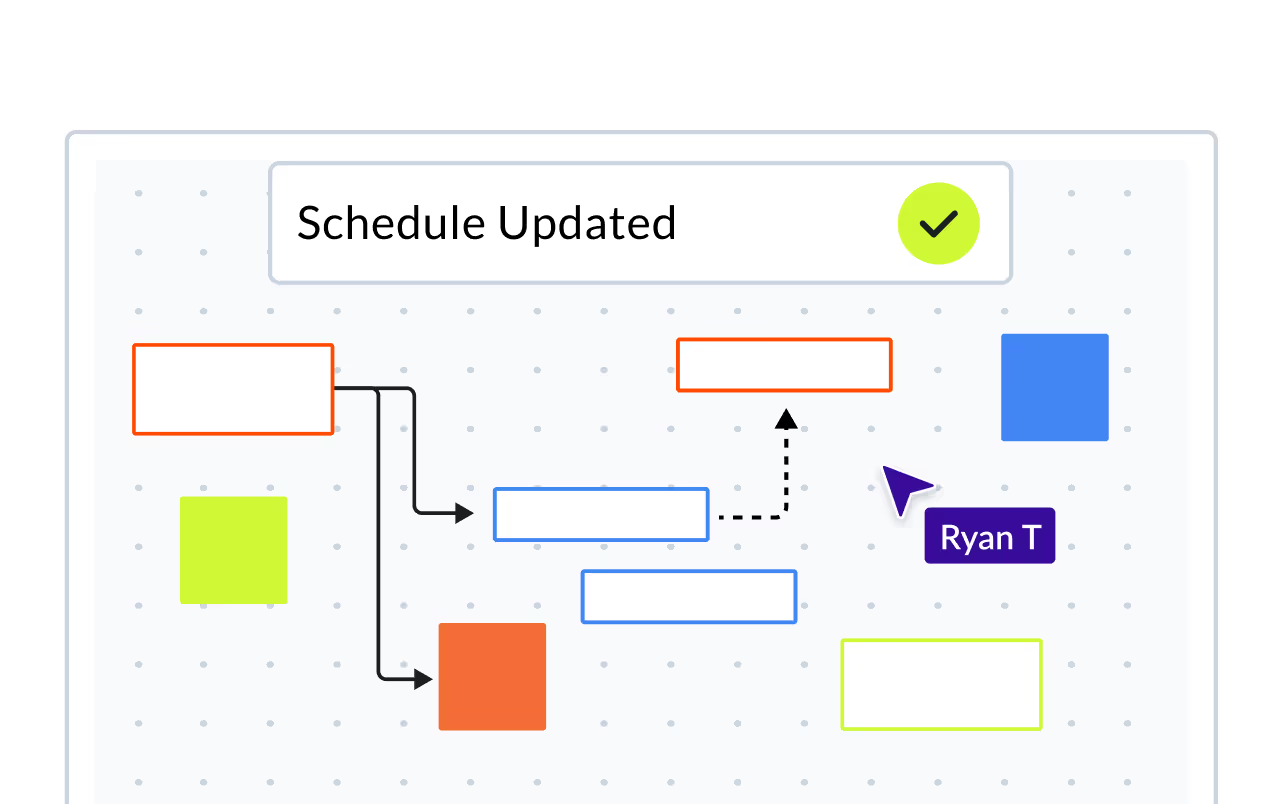
Why Planera Is the Modern Alternative to P6 for Schedulers
Harley Paugh, the owner of LINC Professional, a scheduling consulting firm, has spent 25 years navigating the challenges of construction project scheduling, including 15 years with heavy civil contractor, Granite Construction.

Statistic

Statistic

Statistic
Overview
Working closely with a variety of clients across the industry, Harley had long relied on traditional tools like Oracle P6 and Microsoft Project—software that, while standard, often failed to meet the needs of modern project teams.
Enter Planera: an intuitive, collaborative scheduling platform that Harley discovered in its earliest development stages. Over the past four years, he’s become one of its most vocal advocates, not just for its ease of use, but for how it fundamentally changes how teams plan, update, and communicate about their projects.
The Challenge
Scheduling in construction is notorious for being time-consuming, complex, and often siloed. Harley observed several recurring pain points among clients:
- Software Complexity: Tools like Oracle P6 are powerful but notoriously difficult to use. Most teams had only one or two individuals who could operate them effectively.
- Low Adoption: Because of this complexity, many companies reverted to using basic tools like Excel spreadsheets, which lacked the structure and functionality required for robust project management.
- Lack of Collaboration: Legacy scheduling systems were not built for team participation. Changes required back-and-forth email exchanges, sharing PDFs, and manual updates—often resulting in miscommunication and lost files.
- Frustration and Discouragement: For many teams, the onboarding time and steep learning curves of traditional systems created anxiety and discouragement, making them reluctant to adopt or maintain consistent scheduling practices.
Even when companies invested in scheduling software, they rarely got full value from it due to these barriers. The result was siloed knowledge, poor communication, and missed opportunities for project optimization.

"A lot of people don’t know how to use P6. It’s complicated… and most of the time they resort back to something just as simple as an Excel spreadsheet."
The Solution
Planera changed the game. As Harley puts it, “Planera is a very easy-to-use scheduling tool that solves today’s scheduling fears and worries.” Here’s how:
1. Intuitive Interface
Unlike traditional tools, Planera features a highly visual layout that allows users to immediately grasp the flow of work. Users can build schedules by simply connecting activities on a digital canvas, then translate that into a more formal Gantt chart—bridging ease of use with familiarity.
2. Real-Time Collaboration
Perhaps the most transformative aspect for Harley and his clients is Planera’s collaborative functionality. Team members can:
- Add comments directly in the schedule.
- Make updates and tag stakeholders.
- See changes reflected immediately without trading files.
This seamless, in-platform communication dramatically reduces email threads, eliminates version control issues, and brings more voices into the scheduling process.
3. Accessibility and Flexibility
Being web-based, Planera allows users to access schedules from anywhere. This is especially important for teams with distributed roles (project managers, superintendents, engineers) who need to jump into the plan quickly and make updates or decisions on the fly.
4. Ongoing Support and Learning
Harley integrates Planera into his own workflow by coaching clients during rollout and continuing to check in as they build confidence with the platform. Over time, clients not only become proficient but take ownership of scheduling—a major shift from past dependencies.

"My clients have taken over their scheduling inside their own company, which I feel is just tremendous."
The Outcome
1. Empowered Clients
Harley recounts a success story with a client in Colorado who began using Planera with his guidance. Within a few months, they fully adopted the tool internally and only reached out to Harley on an as-needed basis. “They’ve taken over their scheduling inside their own company, which I feel is just tremendous,” he shared.
2. Enhanced Collaboration
No more hunting through email chains or losing track of PDF schedules. With Planera, Harley and his clients work together in real time, making updates and decisions collaboratively. This has brought new transparency and accountability to the process.
3. Faster, Smarter Scheduling
Tasks like updating dates, statusing activities, adjusting logic, and reviewing progress can now be done quickly and accurately. The simplicity and flexibility of Planera enable teams to focus on strategy and execution instead of wrestling with tools.
4. Higher Engagement Across Teams
Because Planera is so intuitive, it invites participation from roles that were previously excluded from scheduling discussions. “This allows foremen, superintendents, engineers, and project managers to get involved and feel comfortable using the product,” Harley emphasized.
Conclusion
Planera has delivered exactly what Harley hoped for when he first previewed the platform years ago: a modern, collaborative, user-friendly alternative to legacy scheduling software. “If you can make it look different than P6 and make it better, then I think you have something,” he told the Planera team. And that’s exactly what they’ve done.
Today, Planera isn’t just helping Harley do his job better—it’s helping his clients take control of their own project schedules, foster real-time collaboration, and eliminate the inefficiencies of traditional tools. The infinite canvas, visual logic mapping, and cloud-based access make Planera not only a better tool, but a smarter way forward for the entire industry.
About
LINC Professional
You deserve better scheduling software.
Request a Demo
















